Ca Mau Cape
Ca Mau Cape is where the national coordinate GPS 0001 (0 kilometer) is placed. This landmark has the image of a ship reaching out to the sea. Ca Mau Cape is a place where you can watch the sunrise from the east sea in the morning and the sunset from the west sea in the afternoon.
Ca Mau Cape, which is more than 100 kilometers from the center of Ca Mau City, is also the last point on Ho Chi Minh Highway. The road starts from Pac Bo Village in Cao Bang Province, passes through 28 provinces and cities, and ends at the southernmost tip of Vietnam.
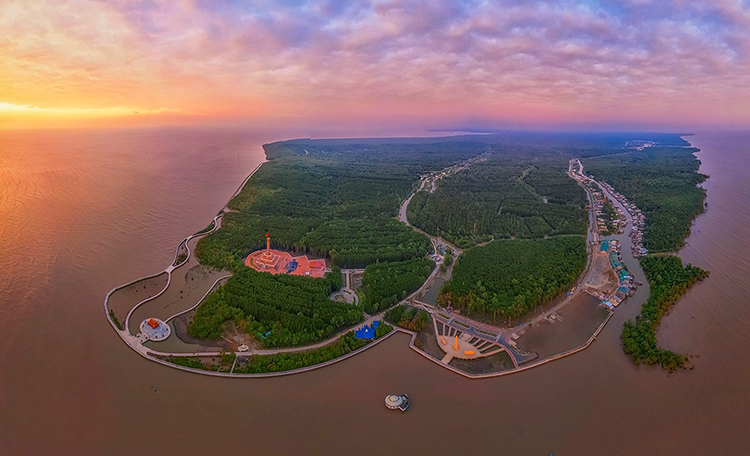
Travelers can also see the flag tower at Dat Mui. The building consists of 3 floors, 41 meters tall, and is modeled after the architecture of the Hanoi flag tower, which is one of the city’s symbols and once a part of the Hanoi Citadel, a World Heritage Site. From the top of the tower, you can see the mangrove forest and the East Sea.
Forestry Fishery 184
Forestry Fishery 184 is situated in the Cha La Hamlet, Tam Giang Commune, Nam Can District, in the middle of the Nam Can mangrove forest. There are 44 species of plants, some of which are rare, such as lumnitzera racemosa, rhizophora mucronata, and aegiceras corniculatum. Traveling deep into the mangrove forest by boat, visitors may be surprised to spot monkeys there.
World biosphere reserve
The Ca Mau Cape World Biosphere Reserve is a natural mangrove ecosystem recognized by UNESCO. The reserve includes Ca Mau Cape National Park, U Minh Ha National Park, and the West Sea coastal protection forest area.
Travelers visiting here should not miss taking a boat trip through the forest at Ca Mau Cape National Park, or participating in mangrove planting. You can learn a lot about the variety of flora and fauna here, or experience bee-eating with local people in U Minh Ha forest.
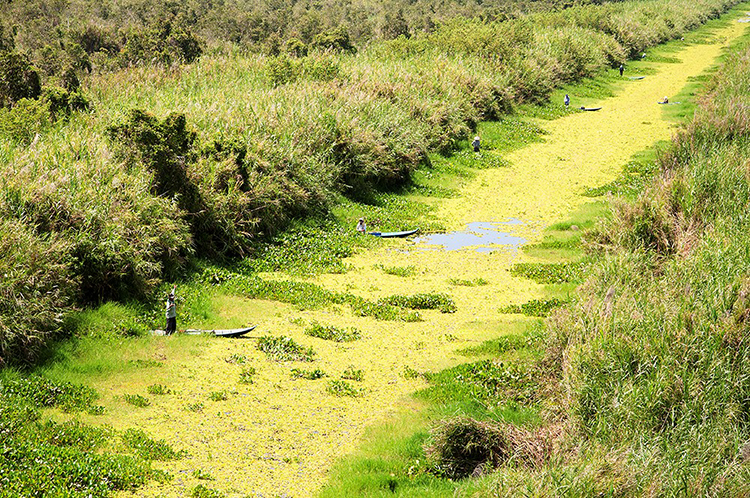
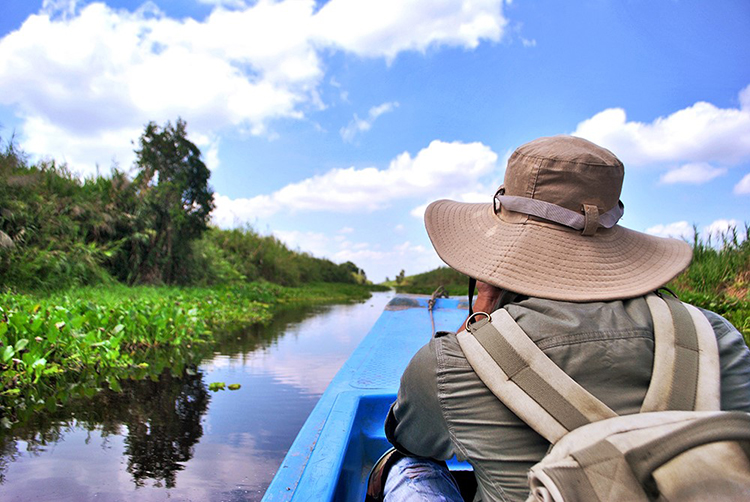
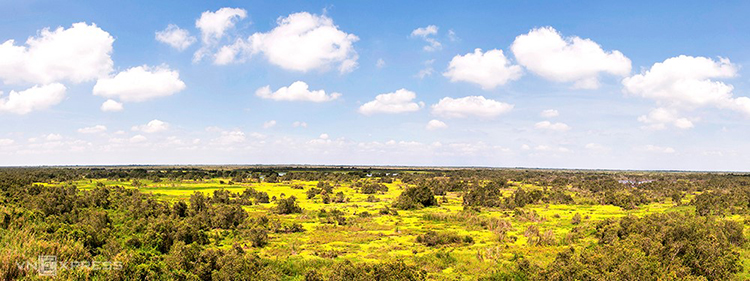
Bird sanctuary
Ngoc Hien Bird Sanctuary covers an area of 130 hectares in Ngoc Hien District. It is home to rare bird species and a rich array of flora. You will be amazed by the red alluvial river branches interspersed among the enormous green swatches of the mangroves.
If you arrive early enough, you can see thousands of birds foraging or flying across the sky to return to their nests.
Other destinations for seeing wild birds are Tu Su Bird Garden (Thoi Binh District, about 30 kilometers from the city center), and the bird sanctuary in the heart of Ca Mau Town (Ly Van Lam Commune, Ward 1).
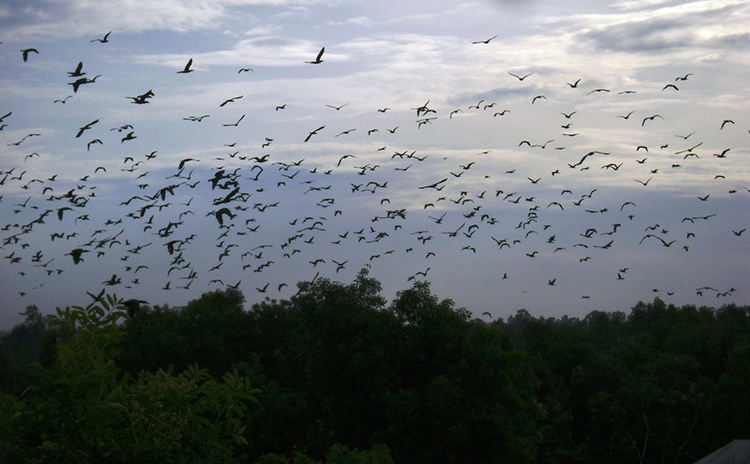
In Ca Mau Town’s bird sanctuary you can watch birds flying back to their nests. Photo courtesy of Ca Mau Tourism
Hon Khoai Island
Hon Khoai Island is located in Ngoc Hien District, 14.6 kilometers from the mainland. It has a peak that is 318 meters above sea level and is recognized as a national, historical and cultural relic. This island is remarkable for its rocky ranges, undulating hills, and green forests.
Hon Da Bac Island
Hon Da Bac is a famous island with pristine features and colorful rocks, estimated to have been formed 180 million years ago. This beautiful island cluster consists of three islands located close to each other: Ong Ngo, Da Le, and Da Bac islands, the highest of which is 50 meters above sea level.
Khai Long Beach
Khai Long Beach has a sandy beach winding along the coast in Khai Long Hamlet, Dat Mui Commune, Ngoc Hien District. The beach, with its unspoiled beauty, is located in the mangrove ecosystem of the region.
Cai Tau Rambai Garden
Cai Tau Rambai Garden is in Nguyen Phich Commune, U Minh District, about 30 kilometers west of the Ca Mau center. This is the land of thousands of rambai trees. Travelers can sit in a canoe as it passes through the small canals to enjoy the peaceful scenery and savor the sweet and fragrant rambai fruit.
Cai Tau rambai fruits are large, have a thin skin, and are succulent, with a sweet and slightly sour taste. When the first rain of the season begins to fall, it means that the rambai are ripe. At this time, many local gardens are opened for travelers to enjoy a taste of Ca Mau’s special fruit.
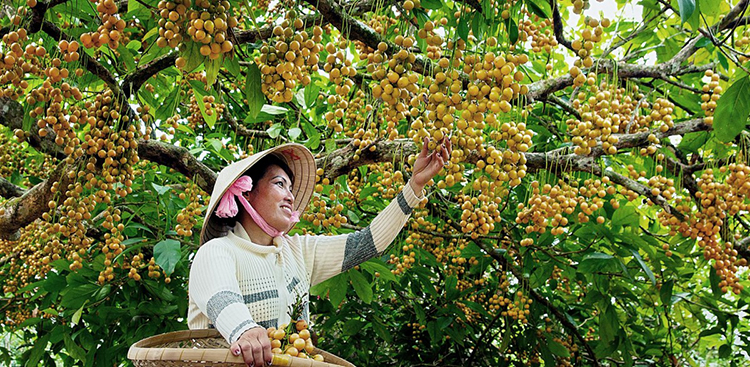
Cai Tau rambai trees are full of fruits in season. Photo by Tran Ca Mau Tourism/Trong Thang
Trem River
Trem River, stretching 42 kilometers, begins at the Kien Giang-Cai Tau river confluence. Trem River is strangely beautiful because the water changes with the seasons. In the rainy season, the river water is red, dotted with blue water hyacinth flowers floating along the stream. In the dry season, the river water is milky white, and on the two sides are rows of green nipa palm.
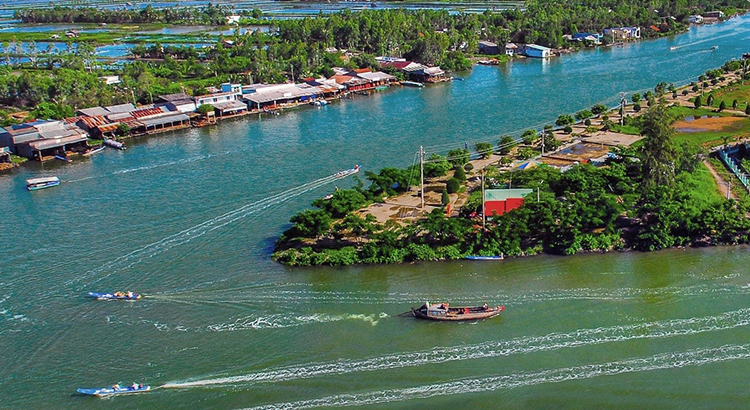
The Trem River confluence in Thoi Binh District, Ca Mau. Photo by Huynh Lam
Thi Tuong Lagoon
Thi Tuong lagoon is known as “the lake in the middle of the delta.” This is the largest lagoon in the Mekong Delta with a length of 12 kilometers, with the widest point 2 kilometers, and the deepest part 1.5 meters.
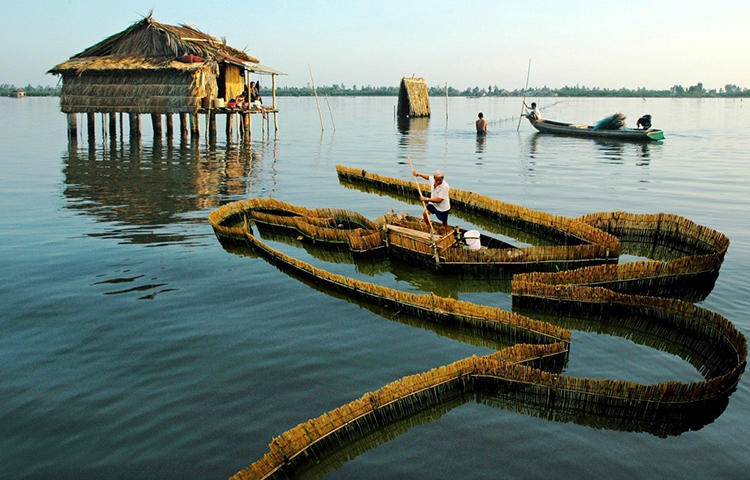
The fishermen in the Thi Tuong Lagoon. Photo by Nguyen Thanh Dung
While taking in the stunning scenery of the lagoon from a motorboat, visitors can experience fishing and eat fresh and delicious seafood.

Để lại một bình luận